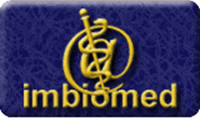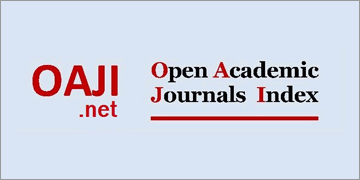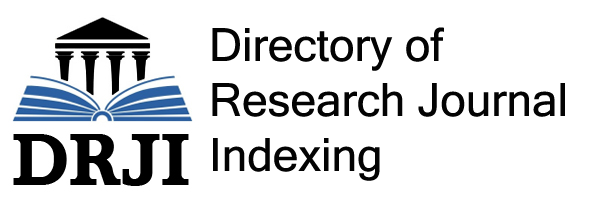Actividad antimicótica del aceite esencial de las hojas de Minthostachys mollis (muña) comparado con el Fluconazol en cultivo de Candida albicans
Resumen
Objetivo.- Demostrar el efecto antimicótico del aceite esencial de las hojas de Minthostachys mollis (muña) en comparación con el Fluconazol en cultivo de Candida albicans. Materiales y Método.- Estudio experimental. El efecto antimicótico se estudió midiendo 80 halos de inhibición distribuidos en 5 grupos mediante el método Kirby-Bauer. Se utilizó una cepa clínica de Candida albicans. Los grupos de estudio fueron grupo muña 25% (GM25%), grupo muña 50% (GM50%), grupo muña 100% (GM100%), un grupo control positivo (Fluconazol), y un grupo control negativo (aceite mineral). El análisis estadístico se realizó mediante la Prueba de Kruskal-Wallis y el Test de Dunn usando el paquete SPSS v.17.0. Se consideró un nivel de significancia < 0,05. Resultados.- La mediana de los halos de inhibición del GM25% fue de 32,00 mm (31,00 a 33,75); del GM50%: 40,00 mm (39,25 a 41,00); del GM100%:46,80mm (46,00 a 48,00), y del grupo Fluconazol: 39,00mm (38,00 a 40,75). No se obtuvo halos de inhibición en el grupo control negativo. Se encontró diferencia significativa entre GM25%, GM100% y el grupo Fluconazol (p<0,001), más no entre este último y GM50% (p>0,05).Conclusión.- El aceite esencial de las hojas de Minthostachys mollis (al 100%) tuvo mayor efecto contra la Candida albicans que el Fluconazol; además, el efecto antimicótico del Fluconazol fue mayor que la Minthostachys mollis al 25%, y fue el mismo que la Minthostachys mollis al 50%.
Citas
- Pinheiro A, Marcenes W, Zakrzewska JM. Dental and oral lesions in HIV infected patients: a study in Brazil. Int Dent J 2004;54(3):131–7.
- Moris DV, Melhem MSC, Martins MA, Mendes RP. Oral Candida spp colonization in human immunodeficiency virus-infected individuals. J Venom Anim Toxins incl Trop Dis 2008; 14(2):224–257.
- Soysa NS, Samaranayake LP, Ellepola ANB. Antimicrobials as a contributory factor in oral candidosis – a brief overview. Oral Dis 2008; 14, 138–43.
- Pienaar ED, Young T, Holmes H. Interventions for the prevention and management of oropharyngeal candidiasis associated with HIV infection in adults and children. Cochrane Database Syst Rev.2010; (11):CD003940.
- Wright SC, Maree JE, Sibanyoni M. Treatment of oral thrush in HIV/AIDS patients with lemon juice and lemon grass (Cymbopogon citratus) and gentian violet. Phytomedicine 2009; 16:118–24.
- Vazquez JA, Zawawi AA. Efficacy of alcohol-based and alcohol-free melaleuca oral solution for the treatment of fluconazole-refractory oropharyngeal candidiasis in patients with AIDS. HIV Clinical Trials 2002; 3(5):379–85.
- Cano C, Bonilla P, Roque M, Ruiz J. Actividad antimicótica in vitro y metabolitos del aceite esencial de las hojas de Minthostachys mollis (muña).Rev Peru Med Exp Salud Publica. 2008; 25(3):298-301.
- Hammond GB, Fernández ID, Villegas LF, Vaisberg AJ. A survey of traditional medicinal plants from the Callejón de Huaylas, Department of Ancash, Perú. J Ethnopharmacol. 1998; 61(1): 17-30.
- Inga BA, guerra MB. Efecto del aceite esencial de Minthostachys mollis (muña) contra algunas bacterias y hongos de interés en la salud [Tesis de Licenciatura]. Lima: Facultad de Farmacia y Bioquímica, Universidad Nacional Mayor de San Marcos; 2000.
- Guiza Pérez GP, Rincón Prieto LM. Estudio del efecto antimicrobiano del aceite esencial de Minthostachys mollis combinado con inactivación térmica, sobre cepas de Listeria monocytogenes y Bacillus cereus [Tesis de bachiller]. Bogotá: Pontificia Universidad Javeriana; 2007.
- Banchio e, Zygadlo J, Valladares gR. Quantitative variations in the essential oil of Minthostachys mollis (Kunth.) Griseb. in response to insects with different feeding habits. J Agric Food Chem. 2005; 53(17): 6903-6.
- United States Pharmacopeia Convention. USP 30. NF 25. The United States Pharmacopeial. The National Formulary. Rockville: 2007.
- National Committee for Clinical Laboratory Standards. Reference method for broth dilution antifungal susceptibility testing of yeasts. Approved standard M27-A2. Wayne, Pa, National Committee for Clinical Laboratory Standards, 2008.
- Costa CR, Cohen AJ, Fernandes OFL et al. Asymptomatic oral carriage of Candida species in HIV-infected patients in the highly active antiretroviral therapy era. Rev Inst Med Trop Sao Paulo 2006; 48: 257–261.
- Campisi G, Pizzo G, Milici ME et al. Candida carriage in the oral cavity of human immunodeficiency virus-infected subjects. Oral Surg Oral Med Oral Pathol Oral Radiol Endod 2002; 93: 281–286.
- Vargas KG, Joly S. Carriage frequency, intensity of carriage, and strains of oral yeast species vary in the progression to oral candidiasis in human immunodeficiency virus-positive individuals. J Clin Micobiol 2002; 40: 341–350
- Tamí-Maury I, Willig J, Vermund S, Jolly P, Aban I, Hill J, Wilson CM. Contemporary profile of oral manifestations of HIV/AIDS and associated risk factors in a Southeastern US clinic. J Public Health Dent. 2011;71(4):257-64.
- Delgado AC, de Jesus Pedro R, Aoki FH, Resende MR, Trabasso P, Colombo AL, de Oliveira MS, Mikami Y, Moretti ML.Clinical and microbiological assessment of patients with a long-term diagnosis of human immunodeficiency virus infection and Candida oral colonization. Clin Microbiol Infect. 2009;15(4):364-71.
- Guía nacional de atención integral de la persona viviendo con el VIH/SIDA(PVVIH/S). Ministerio de Salud. Segunda Edición. Abril 2006.
- Ruiz-Camps I, Cuenca-Estrella M. 2009. Antifúngicos para uso sistémico. Enferm Infecc y Microbiología Clín 27 (6): 353-362
- Bruggemann RJ, Alffenaar JW, Blijlevens NM, Billaud EM, Kosterink JG, Verweij PE. Clinical relevance of the pharmacokinetic interactions of azole antifungal drugs with other coadministered agents. Clin Infect Dis. 2009;48:1441-1458.
- Patton LL, Bonito AJ, Shugars DA. A systematic review of the effectiveness of antifungal drugs for the prevention and treatment of oropharyngeal candidiasis in HIV-positive patients. Oral Surgery, Oral Medicine, Orla Pathology, Oral Radiology and Endodontics 2001;92:170–9.
- Loannidis J, Wilinson D. HIV: prevention of opportunistic infections. Clinical Evidence. 2005; 14.:832–51.
- Epstein JB, Polsky B. Oropharyngeal candidiasis: A review of its clinical spectrum and current therapies. Clinical Therapeutics 1998; 20:40–57.
- Pamo-Reyna OG. Características de los trabajos publicados sobre las propiedades de las plantas en revistas médicas peruanas. Rev Peru Med Exp Salud Publica. 2009; 26(3): 314-23.
Revista Científica
CIMEL
Ciencia e Investigación Médica Estudiantil Latinoamericana
Órgano Oficial de Difusión Científica de la Federación Latinoamericana de Sociedades Científicas de Estudiantes de Medicina FELSOCEM
ISSN versión electrónica: 1992 - 4240
ISSN versión impresa: 1680 - 8398
DECLARACIÓN:
- En caso que el artículo fuese aprobado para su publicación en la Revista Ciencia e Investigación Médica Estudiantil Latinoamericana (CIMEL), cedo mis derechos patrimoniales y autorizo a dicha Revista a la publicación y divulgación del documento en las condiciones, procedimientos y medios que disponga CIMEL.
- Certifico que he contribuido directamente al contenido intelectual de este manuscrito, a la génesis y análisis de sus datos, por lo cual estoy en condiciones de hacerme públicamente responsable de él y acepto que mi nombre figure en la lista de autores.
- Garantizo que el artículo es un documento original y no ha sido publicado, total ni parcialmente, en otra revista científica, salvo en forma de resumen o tesis (en cuyo caso adjunto copia del resumen o carátula de la tesis).
- En caso de que se haya sido publicado previamente, adjunto la autorización original de la Revista donde se realizó la publicación primaria, para su publicación duplicada en la Revista CIMEL.
- No recibiré regalías ni ninguna otra compensación monetaria de parte de la Revista CIMEL por la publicación del artículo.
- No he incurrido en fraude científico, plagio o vicios de autoría; en caso contrario eximo de toda responsabilidad a laRevista CIMEL; y me declaro como el único responsable.
- Me comprometo a no presentar este artículo a otra revista para su publicación, hasta recibir la decisión editorial de la Revista CIMEL sobre su publicación.
- Adjunta a mi firma, incluyo cuál fue mi participación en la elaboración del artículo que presento para publicar a la Revista CIMEL (Según tabla de códigos de participación).
|
|
Códigos de Participación: (Anote estos códigos en la parte correspondiente a su nombre, de acuerdo a su participación dentro del trabajo enviado). |





.png)





 Todo el contenido de esta revista, está bajo
Todo el contenido de esta revista, está bajo  Facebook
Facebook